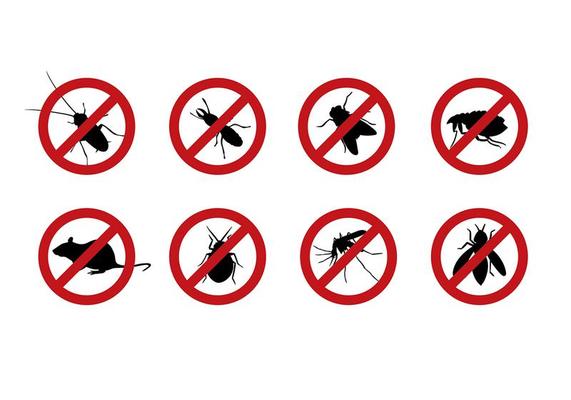A1 Bed Bug Exterminator Charlotte - Efficient and Economical Services
A1 Bed Bug Exterminator Charlotte - Efficient and Economical Services
Blog Article
Bed Bug Treatment Failure: Contrasting Chemical Vs. Non-Chemical Solutions
In the realm of insect control, particularly when handling the relentless problem of bed pests, the choice between chemical and non-chemical treatment solutions can be a pivotal one. Both techniques provide unique benefits and drawbacks, affecting variables such as effectiveness, safety considerations, and general expense. By checking out the nuanced information of each technique, a more clear understanding of which path to pursue in attending to a bed bug infestation can be obtained.
Performance of Chemical Therapies
Chemical therapies for bed insect invasions have actually been widely identified for their fast and powerful effectiveness in eliminating these insects. When thinking about the performance of chemical treatments, it is important to recognize that they can offer a extensive and fast remedy to a bed insect problem. Expert pest control specialists typically count on pesticides to target bed bugs at numerous phases of their life cycle, including fairies, eggs, and grownups. These chemicals normally work by interfering with the bed pests' worried system, resulting in paralysis and eventual fatality.
Moreover, chemical therapies have the benefit of supplying recurring impacts, implying that they can continue to remove bed pests also after the preliminary application. This residual activity is particularly helpful in combating any possible re-infestations. In addition, the quick activity of chemical treatments can bring relief to people dealing with severe bed pest invasions, enabling them to gain back control of their living spaces swiftly.
Security Interest In Chemical Solutions
One important aspect that needs cautious factor to consider when making use of chemical solutions for bed bug therapy is guaranteeing the safety and security of occupants and the environment. Direct exposure to particular chemicals utilized in bed bug therapies can lead to respiratory issues, skin inflammation, or various other negative reactions, particularly in individuals with pre-existing problems or sensitivities.
In addition, the environmental effect of chemical options is another considerable consideration. Some chemicals utilized in bed insect treatments might be dangerous to helpful insects, wild animals, and ecological communities if they leach right into the soil or water supply. It is necessary to use chemical treatments judiciously, following safety and security guidelines, and considering much less hazardous options to alleviate these risks and ensure the effective and secure administration of bed insect invasions.
Benefits of Non-Chemical Techniques
Thinking about the prospective security issues and ecological influence related to chemical solutions for bed insect treatment, discovering non-chemical approaches presents an encouraging alternative with a number of unique benefits. Non-chemical approaches provide a more secure option for homes, specifically those with people, children, or pets conscious extreme chemicals. These methods eliminate the dangers of exposure to hazardous substances, decreasing the possibility for negative health impacts. Moreover, non-chemical therapies are environmentally friendly, as they do not add to air or water contamination, making them a lasting choice for bug control.
Additionally, non-chemical remedies can be efficient in targeting bed bugs, consisting of hard-to-reach locations where chemical therapies might not pass through - A1 pest control services charlotte. Approaches such as warmth therapy, vacuuming, steam cleansing, and cushion encasements supply extensive eradication without the use of unsafe chemicals.
Limitations of Non-Chemical Treatments

Furthermore, non-chemical treatments usually require multiple applications to achieve effective obliteration. This can be lengthy and may not constantly assure total elimination of all bed bugs and their eggs, specifically in concealed or hard-to-reach places.
Furthermore, the success of non-chemical treatments heavily counts on proper application and thoroughness, which can be testing for individuals without expert knowledge. Inadequate application of non-chemical approaches A1 exterminators charlotte nc may cause insufficient removal, resulting in consistent problems and the demand for additional treatments.
Consequently, while non-chemical therapies have their advantages, it is important to acknowledge these restrictions and consider them when establishing one of the most efficient approach for handling bed bug problems.
Cost Contrast: Chemical Vs. Non-Chemical Options
Offered the limitations connected with non-chemical therapies, a vital aspect to examine in the context of bed insect monitoring is the expense contrast in between chemical and non-chemical alternatives. Chemical therapies normally involve the application of insecticides by experts, which can range from $250 to $900 per space, depending upon the seriousness of the invasion and the size of the area to be dealt with. In comparison, non-chemical therapies like warm therapy or vapor can be a lot more costly, with expenses ranging from $1,000 to $6,000 for an entire home. While the first expense of chemical therapies might appear lower, multiple therapies may be needed to completely eradicate the invasion, potentially raising the overall cost. On the various other hand, non-chemical options might give an extra sustainable and environment-friendly service, although they can be cost-prohibitive for some people. Inevitably, when thinking about the cost of bed pest therapy choices, it is necessary to consider the in advance expenses versus the efficiency and lasting sustainability of the picked approach.
Verdict

Taking into consideration the potential safety problems and ecological effect connected with chemical services for bed pest therapy, exploring non-chemical methods provides a promising choice with numerous unique advantages.Offered the limitations linked with non-chemical therapies, a vital element to examine in the context of bed bug administration is the cost contrast between chemical and non-chemical alternatives. In comparison, non-chemical treatments like warmth therapy or steam can be extra costly, with costs varying from $1,000 to $6,000 for a whole home. While the first cost of chemical treatments might seem lower, numerous therapies may be called for to completely eradicate the problem, potentially increasing the general expense.In conclusion, when comparing chemical and non-chemical bed pest treatment alternatives, it is important to take into consideration efficiency, safety, advantages, limitations, and price.
Report this page